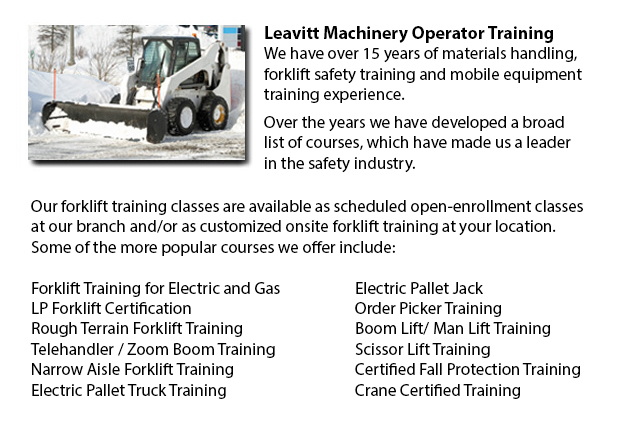
Skid Steer Ticket Burlington - On a skid-steer loader, the lift arms are next to the driver together with pivot points behind the driver's shoulders. This makes them different compared to a traditional front loader. Due to the operator's proximity to moving booms, early skid loaders were not as safe as traditional front loaders, specially through the operator's entry and exit. Today's' modern skid-steer loaders have various features to protect the driver like for example fully-enclosed cabs. Like various front loaders, the skid-steer model can push materials from one place to another, is capable of loading material into a truck or trailer and could carry material in its bucket.
Operation
There are various times where the skid-steer loader could be used rather than a large excavator on the jobsite for digging holes from within. To start, the loader digs a ramp to be utilized to excavate the material out of the hole. As the excavation deepens, the machinery reshapes the ramp making it steeper and longer. This is a very useful way for digging beneath a structure where there is not adequate overhead clearance for the boom of a large excavator. Like for instance, this is a common situation when digging a basement under an existing house or building.
There is much flexibility in the attachments which the skid steer loaders are capable of. For example, the traditional bucket of many of these loaders can be replaced with many attachments which are powered by the loader's hydraulic system, including mowers, snow blades, cement mixers, pallet forks, backhoes, tree spades and sweepers. Several other popular specialized buckets and attachments include angle brooms, dumping hoppers, wood chipper machines, grapples, tillers, stump grinders rippers, wheel saws, snow blades, and trenchers.
History
In 1957, the very first front-end, 3-wheeled loader was invented in Rothsay, in the state of Minnesota by brothers Cyril and Louis Keller. The brothers invented the loader in order to help a farmer mechanize the process of cleaning turkey manure from his barn. This machine was compact and light and had a back caster wheel which enabled it to turn around and maneuver within its own length, allowing it to execute the same jobs as a conventional front-end loader.
The Melroe brothers of Melroe Manufacturing Company in Gwinner, N.D. bought in 1958, the rights to the Keller loader. The company then employed the Keller brothers to help with development of the loader. The M-200 Melroe was the result of this partnership. This particular model was a self-propelled loader that was introduced to the market in the year 1958. The M-200 Melroe featured a a rear caster wheel, a 12.9 HP engine, a 750 lb lift capacity and two independent front drive wheels. By the year 1960, they replaced the caster wheel along with a rear axle and launched the first 4 wheel skid steer loader which was referred to as the M-400.
The M-400 shortly became the Melroe Bobcat. Often the term "Bobcat" is utilized as a generic term for skid-steer loaders. The M-440 had an 1100 lb rated operating capacity and was powered by a 15.5 HP engine. The business continued the skid-steer development into the middle part of the 1960s and introduced the M600 loader.
-
Order Picker Training Burlington
Order Picker Training Burlington - Order picker's enables warehouse employees to lift pallets using forks. Also called a stock picker, this particular electrically-powered equipment is similar to a forklift except that an order picker is likewise uti... More -
Crane Certification Burlington
Crane Certification Burlington - The Crane Certification training program includes content recommended by industry regarding the efficient and safe operation of cranes. Trainees would learn the following: how to identify cranes and their component pa... More -
Overhead Crane Training Burlington
Overhead Crane Training Burlington - The overhead crane is a piece of equipment which can lift and move huge, heavy objects which can't be handled by hands. Typically, overhead cranes are fixed in place. These equipment are capable of moving huge vol... More -
Aerial Lift / Boom Lift / Man Lift / Scissor Lift Training in Burlington
Lift tables or scissor lifts could elevate both people and goods vertically. They are normally used in construction, commercial and industrial environments. Commonly, the use of a scissor lift is to lift and lower supplies from one floor of a job loc... More -
Telehandler Operator Training Burlington
Telehandler Operator Training Burlington - Telescopic Handler forklifts or telehandler forklifts are usually found on construction places and their popularity continues to rise. The versatility of telehandler forklifts ensures that they are a valuabl... More -
Forklift Training Classes Burlington
Forklift Training Classes Burlington - Forklift are heavy pieces of industrial machines that are made use of in transporting and the handling of merchandise and materials. They are often known as Lift trucks and are found in all sorts of businesses.... More -
Boom Lift Training Burlington
Boom Lift Training Burlington - Aerial platforms or also known as elevated work platforms are devices that allow workers to perform tasks and duties at elevated heights that would not be otherwise accessible. There are a variety of aerial lifts avail... More -
Bucket Truck Training Burlington
Bucket Truck Training Burlington - The Vehicle-Mounted Aerial Work Platform or also called bucket truck training program is intended to decrease the risk of incident and personal injury while working in close proximity or with bucket trucks by effici... More

Forklift Training Burlington
TOLL FREE: 1-888-254-6157
Burlington, Ontario
forklifttrainingburlington.com
Email Us
About Us


